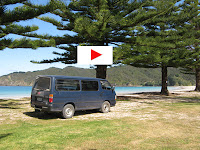Our starting place for this roadtrip is my home in Browns Bay on the North Shore in Auckland. A temperate, fertile area bordering a protected harbour replete with sealife - but devoid of native Maori inhabitants when Auckland was chosen as the capital of NZ by Governor Hobson in 1840. The reasons for the lack of local Maori presence are chilling.
In “The North Shore - an illustrated history” David Verran’s version of events is brief: the local warring “tribes linked together to unsuccessfully combat Ngapuhi in the early 1820’s...[the] survivors then abandoned the district and the victorious Ngapuhi returned to the north, leaving the area abandoned.”
This terse, sanitized description is typical of the modern-day whitewashing/PC revisionism of early NZ history.
Readings of earlier texts (eg. CF Manning “Early New Zealand”, “The Musket Wars”) reveal the appalling truth: genocide, cannibalism, and enslavery of Maori by Maori.
In the early 1800’s the far-north tribe Ngapuhi armed themselves with muskets and marched south against stone-age tribes - annihilating, cooking, eating and otherwise enslaving all the members of Maori settlements they encountered all over the North Island. During this process the inhabitants of the present-day North Shore area were overwhelmed, butchered wholesale and feasted upon or otherwise taken into slavery. This genocide explains why there were so few local Maori to resist the European land-grabbers who poured into the area in the mid-19th century.
Read more at
https://en.wikipedia.org/wiki/Musket_Wars
 |
| a Maori war-party with muskets |











































